Untreated, natural wood is an excellent material to use in your garden. But, if you are in search of long-lasting results, you probably wonder how to protect the wood in flower boxes and raised garden beds. We’ve researched wood preservatives to get the answer for you.
Protect the wood used for planters by using:
- Natural oils
- Plant-based sealants
- Water-soluble sealants
- Liner
- Treated wood
- Wood alternatives: concrete blocks, bricks, natural stone, recycled composite wood, or mounded soil
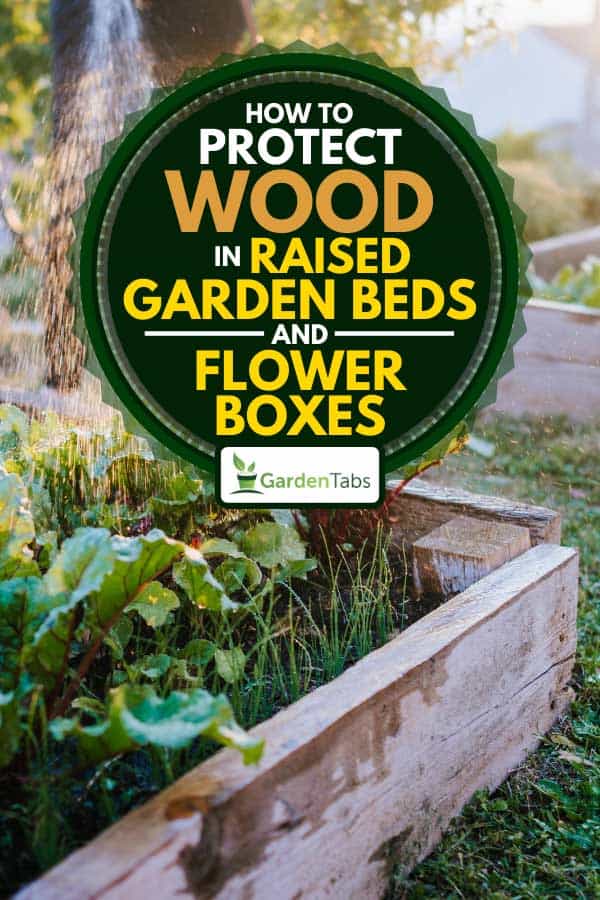
Keep reading, and we’ll take a closer look at wood preservatives. We’ll also discuss how different types of wood withstand the outdoor elements so you can select wood for long-lasting results.
What is the Best Wood for Planter Boxes and Garden Beds?
If you are constructing a wooden planter box or framing a raised garden bed, the choices of wood species to use might be a bit overwhelming. Hardwoods like teak, maple, and oak are often recommended for outdoor uses but, softwoods like pine and cedar also withstand outdoor elements quite well. More about this later.
Consider also the cost of the wood, and the color for the aesthetic appeal of your finished planter. There is no right or wrong answer for the best type of wood.
Most types of unfinished wood will last for several years outdoors so, to get the most out of any wood, you should protect it with a sealant.
Natural Oils
Because they are non-toxic, natural oils are safe to use on wooden planters. Natural oils like linseed oil, tung oil, and hemp oil deeply penetrate the wood for a water-resistant seal. Using a natural oil will also enhance the natural colors and grains of the wood.
Click here to find this on Amazon.
Plant-Based Sealants
Natural, plant-based sealants are environmentally friendly. These sealants are derived from vegetable oils, so they protect against moisture. Some plant-based sealants also contain plant-based pigments to stain the wood to the desired color.
Click here to find this on Amazon.
Water-Soluble Sealants
Biochemically engineered, water-soluble wood sealants are eco-friendly because they do not contain solvents or volatile organic compounds (VOCs). Water-soluble sealants do not chemically bond with wood so, they require frequent application. Stain your wood to the desired color by using a water-soluble sealant that contains plant or earth derived pigments.
Click here to find this on Amazon.
Liner
Liners protect unfinished wooden planters because they provide a barrier between the wood and the soil. We’ll delve into the pros and cons of liners a bit later but, it is essential to note that you should use a permeable liner to promote drainage and aeration for healthy soil and plants. Landscaping fabric, burlap, or woven synthetic materials work well.
Click here to find this on Amazon.
Treated Wood
Treated wood is best known for its longevity, particularly for outdoor uses. Modern treatments use a combination of copper to repel insects and fungicide to prevent rot.
Look for wood treated with copper azole (CA-B) or alkaline copper quat (AKQ); both are relatively safe for garden use. Treated wood is not necessarily water-resistant so, it is still a good idea to seal treated timber with a water repellent.
Check out our blog, “13 Plant-Safe Wood Sealers for Planter Boxes.”
Wood Alternatives
As with any DIY project, there are many alternative materials that you can use. To make a raised garden bed without using wood, consider using cement blocks, bricks, natural stone, or recycled composite wood for a border. Simplify the project even more by mounding the soil to eliminate a structural border.
Metal and plastic are also suitable materials for planter boxes. Check out our blog, “13 Awesome Above Ground Planter Boxes,” for even more great ideas.
What Wood Lasts the Longest Outdoors?
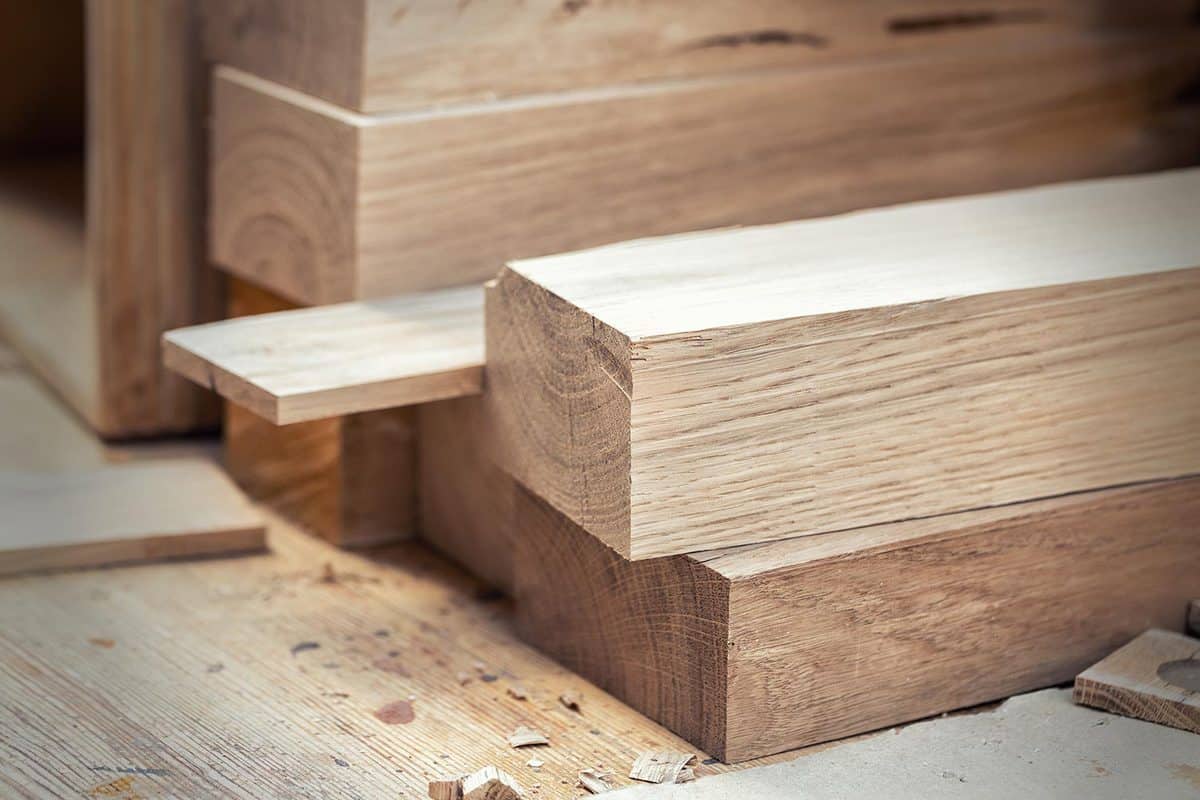
Hardwoods are typically recommended for outdoor use because they are incredibly dense and moisture resistant. Examples of hardwoods are maple, teak, oak, and mahogany. Hardwoods tend to outlast lower density softwoods like pine, cedar, spruce, and redwood.
However, softwoods are more workable and tend to be less expensive than hardwoods. Used for an outdoor flower box or raised garden, sealed or pressure-treated softwoods can last a decade or longer.
How Long Will Untreated Wood Last Outside?
Untreated wood can last as few as 2-5 years or as many as 10-15 years outside; it depends on the wood’s exposure to the elements. Exposure to water/moisture and the sun’s UV rays can cause wood to decompose more quickly. Sealing untreated wood, and keeping it shaded, if possible, will protect it against the elements to extend longevity.
Can I Use Treated Wood for Planter Boxes?
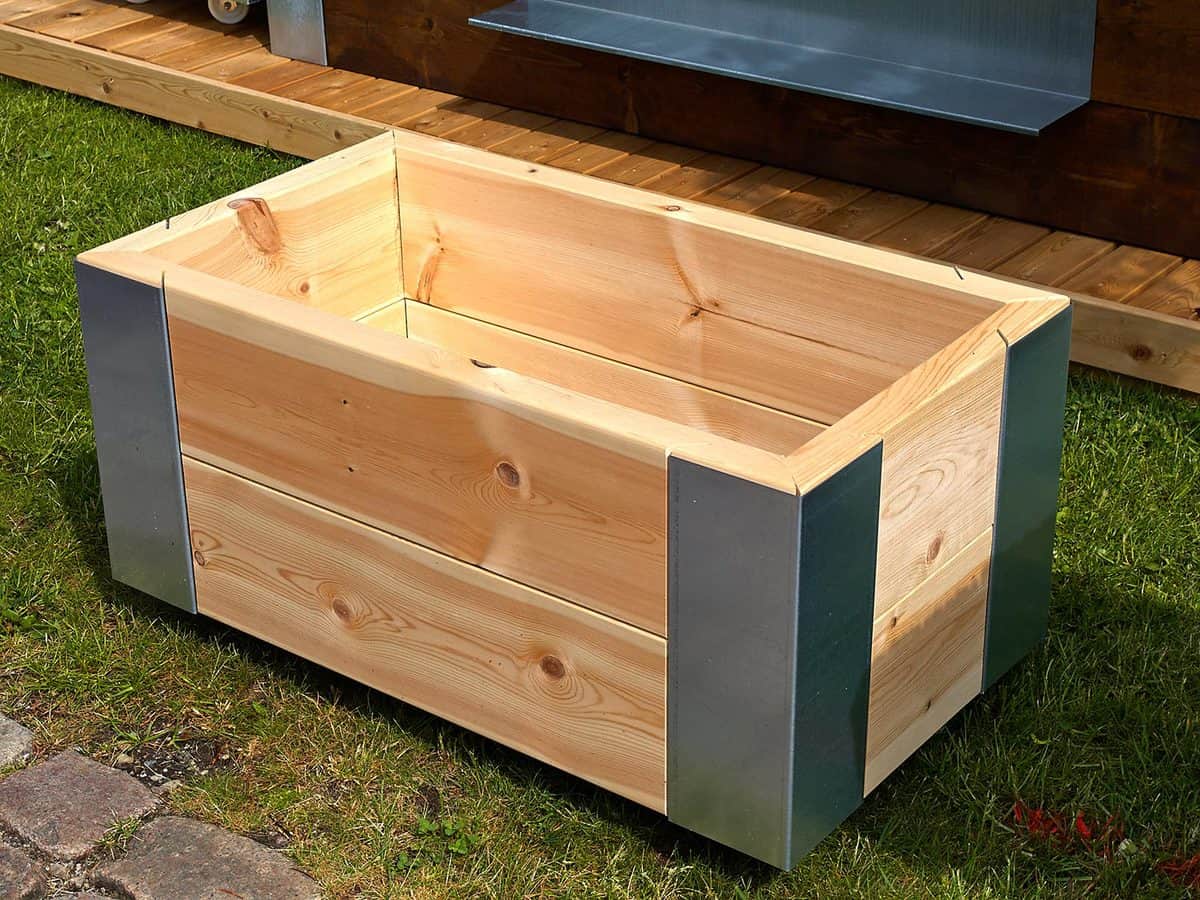
You can use treated wood for planter boxes. Being a conscientious gardener, you probably still have some concern about leaching harmful chemicals into the soil.
So, here is the good news. As of 2003, chromated copper arsenate (CCA) has been banned by the Environmental Protection Agency (EPA) for use to treat wood used for residential purposes. New preservatives used to treat wood no longer contain arsenic.
Instead, copper deters insects, and fungicide prevents wood decay. Modern wood treatments containing either copper azole (CA-B) or alkaline copper quat (AKQ) are considered quite safe, even for use in the vicinity of edible plants.
If you have any doubts about using treated wood for planter boxes, you can use either untreated wood sealed with natural preservatives or alternative materials instead.
Avoid using repurposed wood, particularly for planters to grow edible plants. If you do not know the origin of the wood, it may have been treated, painted, or stained with harmful chemicals.
What is the Most Rot Resistant Wood?
Heartwood and sapwood make up all species of wood. Heartwood is the dense, innermost part of a tree trunk; it is older growth that mainly consists of dead cells. Sapwood is the newest growth of a tree trunk; it consists of both living and dead cells within the outermost rings just behind the bark.
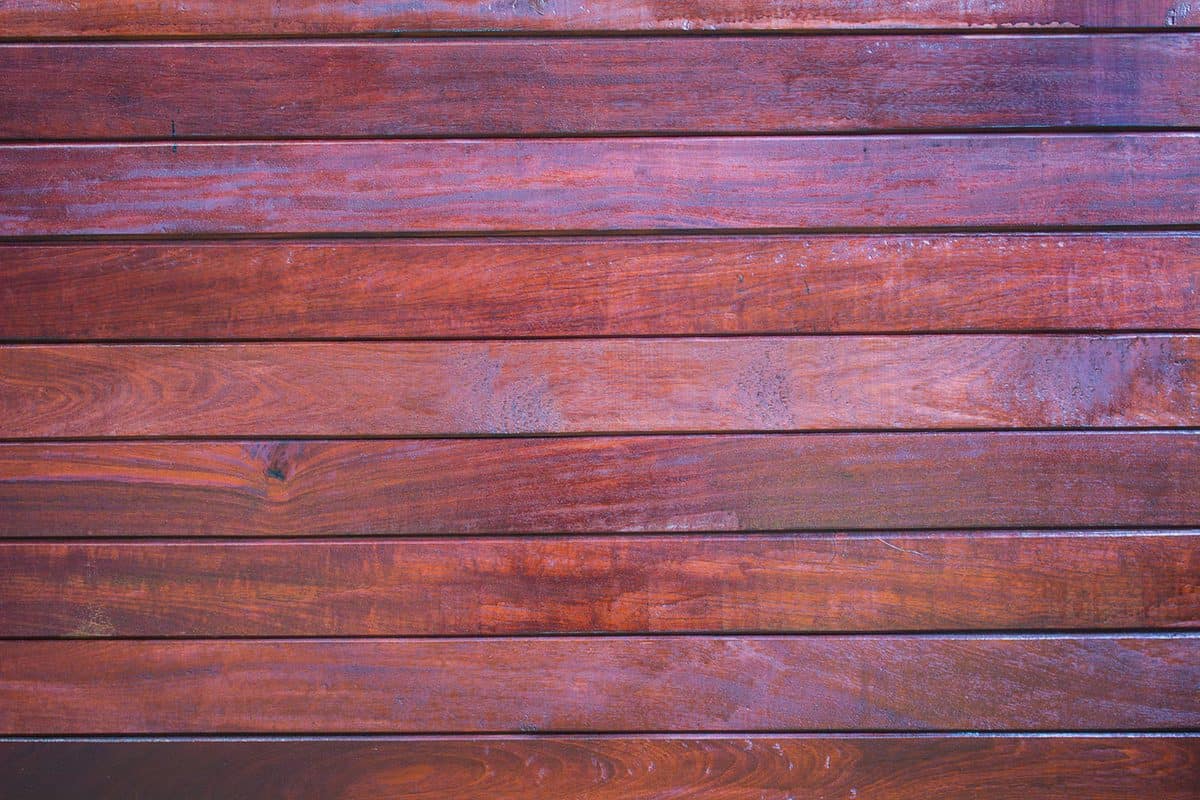
The heartwood of any species is the most resistant to rot and infestation. The heartwood portion of a tree is typically harder and darker in color than sapwood. Sapwood is a softer material, lighter in color, and more susceptible to rot and infestation.
Because it is harvested from older trees, heartwood lumber tends to be more expensive than sapwood. If you opt to use sapwood, some species of wood are known for being more rot-resistant like:
- Cedar
- Cypress
- Redwood
- White Oak
- Teak
- Mahogany
- Black Locust
How Do You Waterproof the Inside of a Wooden Planter Box?
Before you attempt any waterproofing, its an excellent idea to let the newly constructed planter box sit for 2 - 3 weeks in a cool, dry location, so unfinished wood has an opportunity to dry thoroughly. This will help to prevent the box from warping, without sealing excess moisture inside.
Using a silicone-based calk, apply a bead of caulk to each joint of the wooden planter where two pieces of the wood meet (four corners and along bottom edges). Caulk any visible cracks, holes, or gaps in the wood. Allow the calk time to dry per instructions.
Next, seal the inside edges and bottom of the wooden planter by applying a natural oil, flex seal, plant, or water-based sealant, or liner. Your choice of interior sealer might depend on whether you are growing edible plants.
Now waterproofed, the wooden planter will not leak. But, you still need to allow drainage for healthy plants. Either drill several holes in the bottom of the planter or line the bottom with a layer of pebbles. Cover drilled holes with a piece of porous landscaping fabric to deter soil from leaking.
Do I Need to Line a Wooden Planter Box?
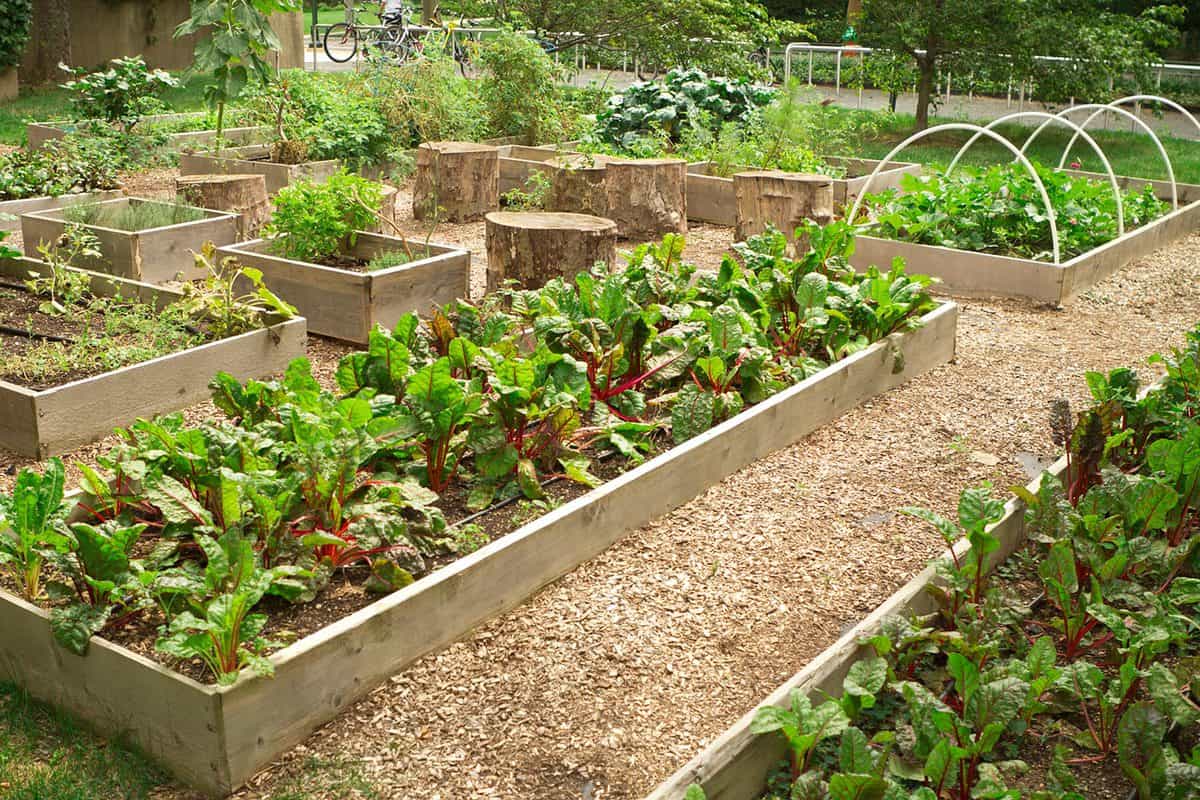
It is not necessary to line a wooden planter box, especially for bottomless raised beds. To decide what is best for your garden, let’s take a look at the pros and cons of lining a wooden planter:
Pros of Using a Liner
- Mitigate soil temperature
- Deter weeds
- Minimize erosion
- Keep out unwanted pests
Cons of Using a Liner
- Prohibits drainage
- They damage easily by digging and challenging to replace
- Expedite wood decay by trapping moisture
If you decide to install a liner, make sure to use a permeable material like landscaping fabric, burlap, hardware cloth, or breathable plastic weave/mesh. This will allow the soil adequate drainage and aeration.
What is the Best Way to Line a Wooden Planter?
Before installing a liner, make sure to allow ample drying time per the instructions provided after sealing the wood with natural oils, or sealants.
How Long Will Untreated Wood Last in Raised Beds?
The longevity of untreated wood used for a raised garden bed depends largely on its exposure to the elements. Most wood species can last between 5 to 15-years outside.
Wood deteriorates quickly if exposed to water/moisture and sunlight. Protect untreated wood by sealing it and, if possible, locating it in a shaded area.
Is It OK to Use Treated Lumber for Raised Beds?
Since 2003, it has become a lot safer to use treated lumber for raised garden beds because chromated copper arsenate (CCA) has been banned from use by the Environmental Protection Agency (EPA). Lumber used for residential purposes no longer contains harmful CCA.
Modern treatments use either copper azole (CA-B) or alkaline copper quat (AKQ) to preserve lumber. Although these compounds can leach into the soil, trace amounts of CA-B and AKQ are not toxic because our bodies do not efficiently absorb them.
If you have any doubts about using treated lumber, you can line the raised garden bed to prevent chemicals from leaching into the soil. Otherwise, you can use untreated wood with eco-friendly sealants or alternative materials.
Avoid using repurposed wood for a raised garden bed, especially if growing edible plants, because you do now know whether it has been treated, painted, or stained with harmful chemicals.
Now that you know how to protect the wood, you can build a planter or raised garden bed and start planting!




